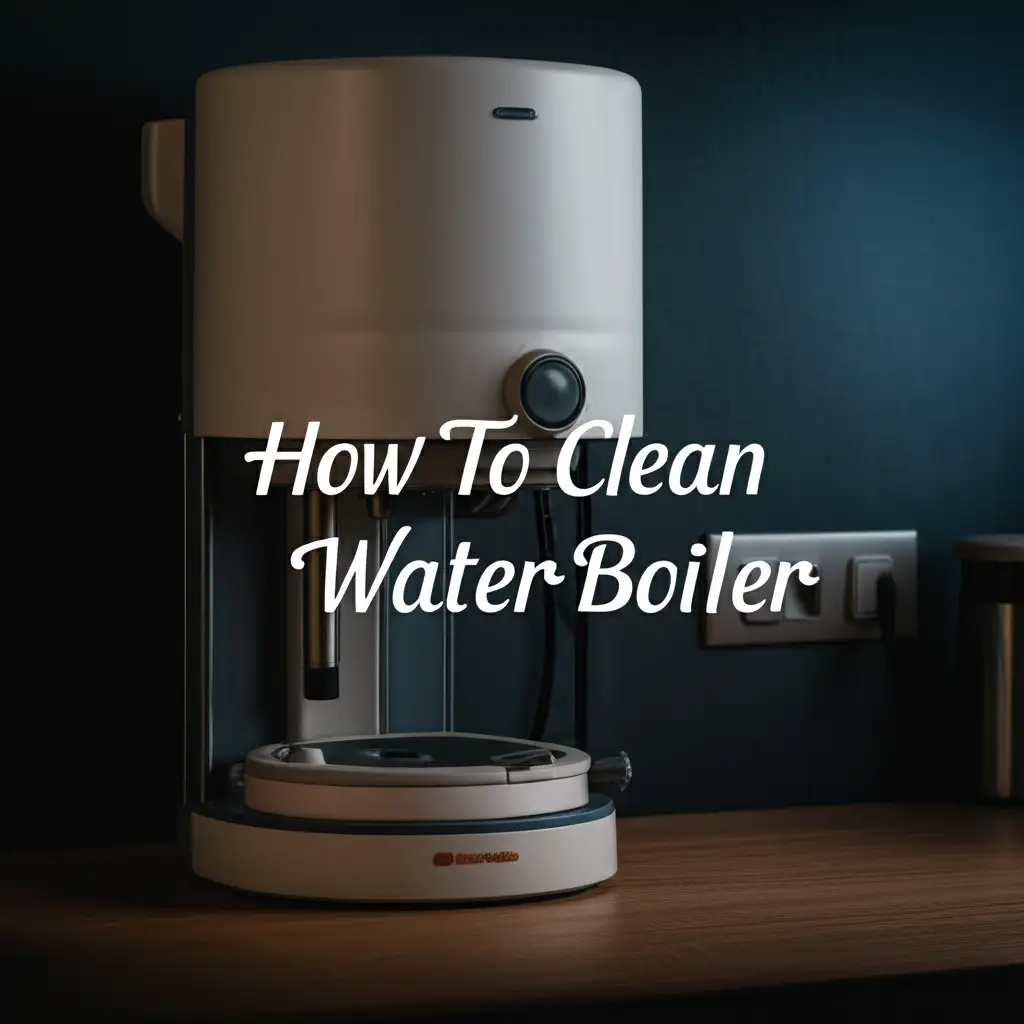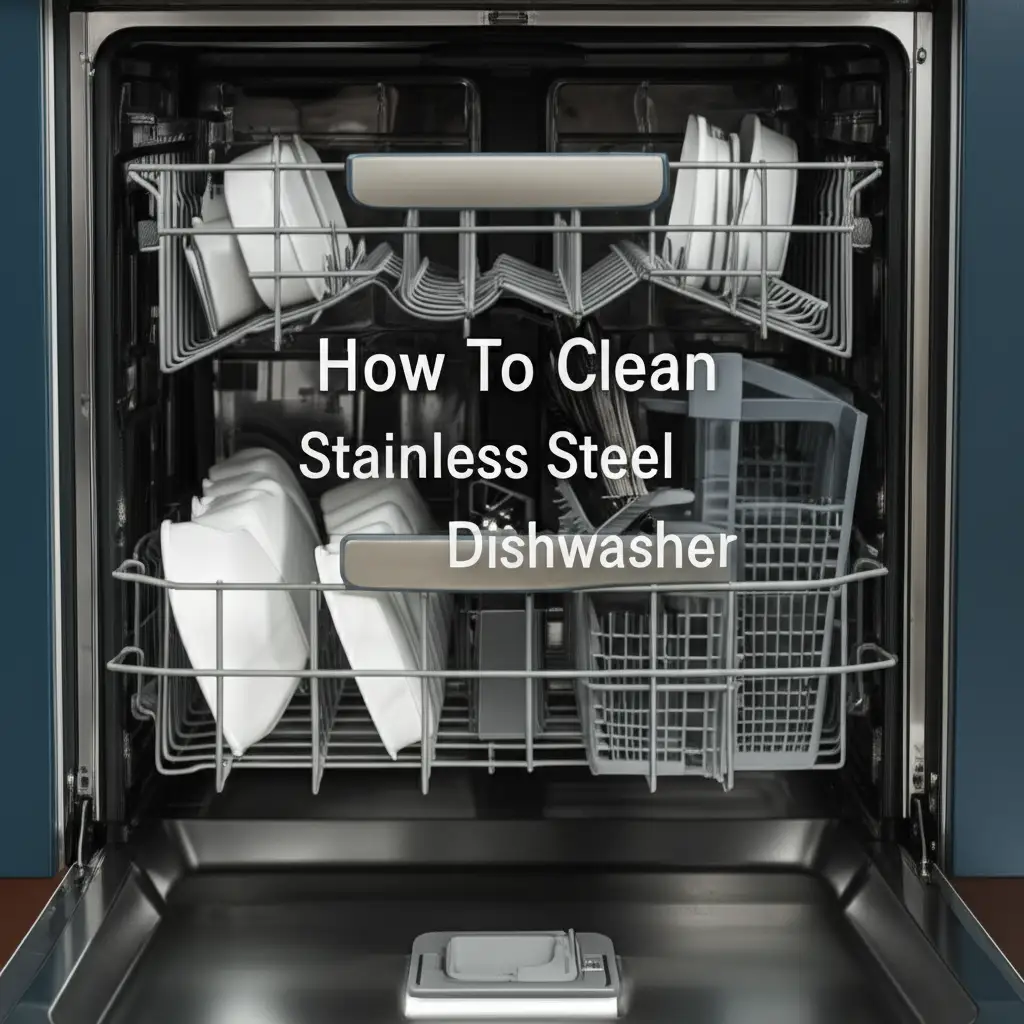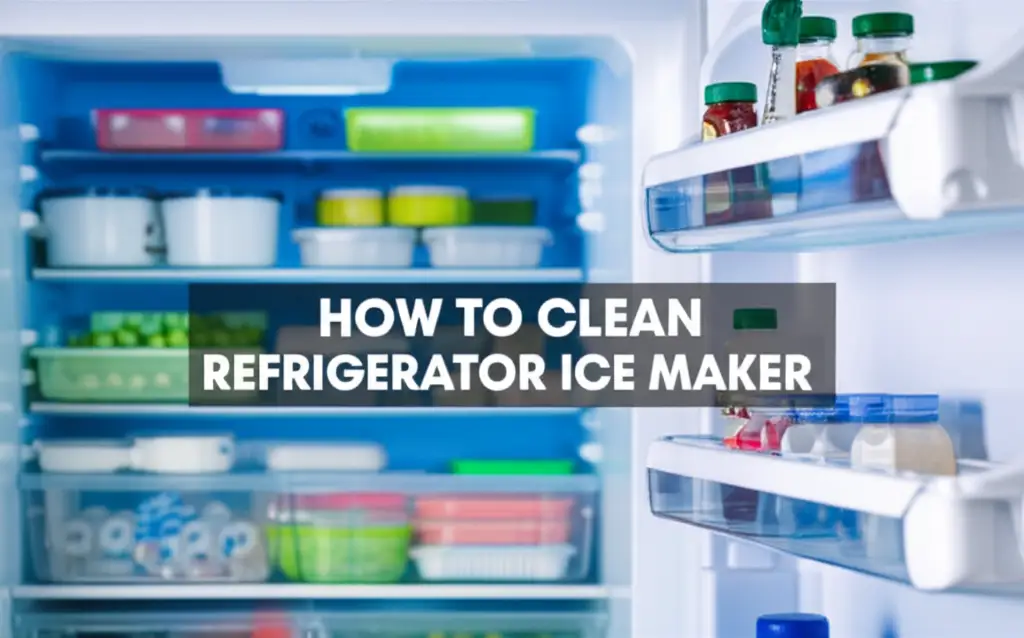· Appliance Care · 17 min read
How To Clean Water Boiler

How to Clean Your Water Boiler: A Complete Guide
Is your morning tea tasting a bit off? Does your electric kettle or hot water dispenser look cloudy inside? Chances are, it needs a good clean. Mineral deposits build up over time, affecting performance and even the taste of your water.
Learning how to clean a water boiler properly keeps your appliance working well. It also ensures you are boiling clean, fresh water for your drinks and cooking. This article provides a comprehensive guide to descaling and maintaining your water boiler. We will cover common methods, supplies, and maintenance tips. Get ready to make your water boiler sparkle again!
Takeaway
- Regularly clean your water boiler to remove limescale and mineral buildup.
- Use natural descalers like white vinegar or lemon juice for effective cleaning.
- Always rinse the boiler multiple times after cleaning to remove all residue.
- Perform deep cleaning every 1-3 months, depending on water hardness.
- Address any hard water stains promptly to prevent severe accumulation.
To clean your water boiler, remove mineral deposits and limescale. Use natural descalers like white vinegar or lemon juice. Fill the boiler, boil the solution, let it sit, then rinse thoroughly. Regular cleaning improves water taste and extends appliance life.
Why Regular Water Boiler Cleaning Matters
Your water boiler works hard, heating water multiple times a day. Over time, this constant heating causes minerals present in tap water to form deposits. These deposits are commonly known as limescale or hard water stains. You might see them as white, crusty buildup inside your appliance.
This buildup is more than just an eyesore. It affects your boiler’s efficiency. A layer of limescale makes your boiler work harder to heat water. This means it uses more electricity. Furthermore, these mineral flakes can end up in your drinks. This changes the taste and can be unpleasant.
Regularly cleaning your water boiler extends its lifespan. It also ensures you always have pure, clean-tasting hot water. Ignoring the buildup can lead to permanent damage or reduced performance. A clean boiler heats water faster and saves energy. This makes the cleaning effort worthwhile.
Many people face problems with hard water. Hard water contains high levels of minerals like calcium and magnesium. These minerals are the primary cause of limescale. Understanding your water quality helps in determining cleaning frequency. You can often tell if you have hard water by looking at other appliances. For instance, if you often see hard water stains on your fixtures, your boiler will likely accumulate scale quickly. Addressing these issues across your home improves overall cleanliness.
Neglecting water boiler cleanliness can also impact your health indirectly. While limescale itself is not harmful, it can harbor bacteria if left unchecked. A clean boiler ensures sanitation. It provides the best quality water for your daily needs. Keep your boiler pristine for optimal function and peace of mind.
Essential Supplies for Cleaning Your Water Boiler
Before you begin the cleaning process, gather your supplies. You likely have most of these items in your pantry. Using the right tools makes the job easier and more effective. Natural solutions are often the best choice for cleaning appliances that heat water for consumption.
Here is what you will need:
- White Vinegar: This is a powerful, natural descaler. Its acidic nature breaks down mineral deposits effectively. White vinegar is safe and widely available. It is my go-to for many household cleaning tasks.
- Lemon Juice or Citric Acid: These are excellent alternatives to vinegar. They work similarly to dissolve limescale. Lemon juice leaves a fresh, clean scent. You can find citric acid powder in the baking aisle or cleaning section of stores.
- Water: You will need tap water for diluting solutions and rinsing. Make sure you have access to a clean water source.
- Soft Cloth or Sponge: A non-abrasive cloth is vital for wiping down surfaces. Avoid anything scratchy to protect the boiler’s finish.
- Bottle Brush (Optional): For boilers with narrow openings, a bottle brush helps reach inside. It assists in scrubbing away stubborn residue.
- Measuring Cups: Accuracy in measurements ensures the right cleaning solution strength.
Always choose food-safe cleaning agents for a water boiler. This is because the appliance heats water for consumption. Chemical cleaners can leave harmful residues. Natural options like vinegar and lemon juice are safe and efficient. They break down hard water deposits without risks.
Many cleaning tasks benefit from simple, household ingredients. For example, if you need to clean hard water from a shower head, vinegar is often the primary ingredient. The principles are similar: an acid reacts with the mineral base to dissolve it. Having these basic supplies on hand prepares you for various cleaning challenges around your home.
Ensure you have enough ventilation when using vinegar. While not toxic, its smell can be strong for some people. Open a window or turn on a fan. Prepare your cleaning area to avoid spills. This simple preparation helps achieve the best cleaning results.
Step-by-Step Guide: Cleaning with Vinegar
Cleaning your water boiler with white vinegar is a simple, effective method. This process dissolves limescale and leaves your boiler sparkling. I have personally used this method many times with great success. It is an easy way to restore your appliance.
Follow these steps for a thorough clean:
- Unplug and Empty the Boiler: Safety comes first. Always unplug your water boiler from the power outlet. Ensure the boiler is completely cool. Then, pour out any remaining water inside. This step prevents accidents and prepares the boiler for cleaning.
- Create the Vinegar Solution: Mix equal parts white vinegar and water. For example, if your boiler holds 1 liter, use 500ml of vinegar and 500ml of water. For heavily scaled boilers, you can use a stronger solution or even undiluted vinegar. This mixture forms the descaling agent.
- Fill the Boiler with Solution: Carefully pour the vinegar and water mixture into the boiler. Do not fill it past the maximum fill line. The solution needs space to bubble when boiled.
- Boil the Solution: Plug the boiler back in and turn it on. Bring the vinegar solution to a full boil. Let it boil for a few minutes. This boiling action helps activate the vinegar’s descaling properties. You might see flakes of limescale detaching.
- Let It Sit: After boiling, unplug the boiler again. Let the hot vinegar solution sit inside for at least 30 minutes to an hour. For severe limescale buildup, leave it overnight. The longer it sits, the more effective the descaling will be.
- Discard the Solution: Carefully pour out the vinegar solution. You will notice dislodged mineral flakes and cloudy water. This indicates the cleaning is working. Be careful as the water might still be warm.
- Rinse Thoroughly (Multiple Times): This is a crucial step. Rinse the inside of the boiler thoroughly with clean tap water. Fill it, swirl, and empty it at least 2-3 times. You want to remove all traces of vinegar and dislodged scale. Failure to rinse properly can leave a vinegar taste in your water.
- Perform a Test Boil: Fill the boiler with fresh, clean water. Boil it and then discard this water. This final boil helps ensure all vinegar residue is gone. It also primes the boiler for normal use. Your water boiler should now be clean and ready for use.
This method also works well for other appliances that handle hot water. For instance, if you have a traditional hot water heater, sediment can build up there too. While the process is different for large heaters, the principle of using a descaling agent remains. Regular descaling is a key part of appliance maintenance.
Alternative Cleaning Methods: Lemon Juice and Baking Soda
White vinegar is a top choice for cleaning water boilers. However, you have other effective natural options. Lemon juice and baking soda are great alternatives. They are safe, readily available, and powerful against mineral deposits.
Using Lemon Juice or Citric Acid:
Lemon juice works much like vinegar. It contains citric acid, which dissolves limescale effectively. It also leaves a pleasant citrus scent. This is a good choice if you dislike the strong smell of vinegar.
- Unplug and Empty: Start by unplugging your boiler and ensuring it is cool and empty. Safety first, as always.
- Prepare Solution: You can use fresh lemon juice or powdered citric acid.
- For fresh lemon juice: Squeeze 3-5 lemons into the boiler, or use about half a cup of bottled lemon juice. Then, fill the rest of the boiler with water up to the maximum line.
- For citric acid: Mix 1-2 tablespoons of citric acid powder with water. Fill the boiler up to the maximum line.
- Boil and Sit: Plug in the boiler and bring the solution to a boil. Let it boil for a few minutes. Unplug and let the solution sit for 30 minutes to a few hours. For heavy buildup, leave it overnight.
- Discard and Rinse: Pour out the solution. Rinse the boiler thoroughly with clean water multiple times. Make sure no lemon residue remains.
- Test Boil: Perform a final boil with fresh water and discard it. This ensures your water tastes clean.
Using Baking Soda:
Baking soda is a mild abrasive and a natural deodorizer. It is less effective at dissolving heavy scale than acids. However, it can help with minor buildup and odors. It is a good choice for light cleaning or maintenance.
- Unplug and Empty: Unplug and empty your boiler as usual.
- Make a Paste (for scrubbing): For visible spots, mix a few tablespoons of baking soda with a little water. Create a thick paste.
- Apply and Scrub: Apply the paste to affected areas inside the boiler. Use a soft cloth or bottle brush to gently scrub the surfaces. Focus on the base where scale often accumulates.
- Fill and Boil (for deodorizing/light cleaning): For a general clean and odor removal, put 1-2 tablespoons of baking soda directly into the empty boiler. Fill it with water to the maximum line.
- Boil and Sit: Bring the water to a boil. Let it boil for a few minutes. Unplug and let the solution sit for 15-30 minutes.
- Discard and Rinse: Pour out the baking soda solution. Rinse the boiler thoroughly several times with fresh water.
- Test Boil: Boil a final batch of fresh water and discard it. Your boiler should feel cleaner and smell fresher.
These alternative methods provide flexibility. They let you choose the best option based on what you have available. They also work well for general appliance cleaning tasks. For instance, if you have issues with sediment from your water lines in other parts of your home, these gentle methods can often help.
Tackling Stubborn Limescale and Mineral Buildup
Sometimes, your water boiler has stubborn limescale. This happens if cleaning has been neglected for a long time. Thick layers of mineral deposits require more effort. Do not despair; these tough stains are usually removable.
Here are specific strategies for persistent buildup:
- Stronger Vinegar Solution: For very heavy limescale, use undiluted white vinegar. Fill the boiler with vinegar up to the scale line. Boil it and let it sit for several hours, or even overnight. This extended soaking time allows the vinegar to work deeper. Remember to rinse extra thoroughly afterward.
- Repeated Treatments: One cleaning might not be enough for thick scale. You might need to repeat the vinegar or lemon juice boiling process. Do it two or three times. Each cycle will loosen more of the mineral deposits. Patience is key here.
- Gentle Scrubbing: After the descaling solution has soaked, some scale might still cling. Use a soft bottle brush or a non-abrasive sponge. Gently scrub the inside surfaces. Be careful not to scratch the heating element or the boiler’s lining. This manual action helps dislodge loosened particles.
- Removing Filter Buildup: Many water boilers have a removable filter at the spout. This filter catches larger scale flakes. If your filter is covered in scale, remove it. Soak it in a small bowl of undiluted white vinegar for 30 minutes. Use an old toothbrush to gently scrub away any remaining scale. Rinse it well before placing it back. This ensures clean pouring water.
- Considering Specialized Descalers (Caution): If natural methods fail, you can consider commercial descaling products. These products are often stronger acids. Follow the product instructions carefully. Always ensure the product is safe for use in appliances that prepare food or drinks. Rinse extensively after using chemical descalers.
Preventing future stubborn buildup is always better. Regular cleaning stops small deposits from becoming major problems. If you have particularly hard water, consider cleaning your boiler more often. A simple rinse after each use can also help.
Hard water is a common issue affecting many appliances. Just like a water boiler, other items like a water filter can accumulate mineral residue. Understanding how to tackle these universal hard water problems helps maintain your entire home. Keep an eye out for telltale signs of buildup in all your water-using devices.
Maintaining Your Water Boiler for Long-Term Performance
Cleaning your water boiler is important, but ongoing maintenance is equally vital. Regular care keeps your appliance in top condition. It prevents future heavy buildup and extends its life. Simple habits can make a big difference.
Here are key tips for maintaining your water boiler:
- Regular Rinsing: After each use, empty any remaining water from the boiler. Give it a quick rinse with fresh water. This prevents minerals from settling and drying onto the surfaces. This small step reduces daily accumulation.
- Weekly Light Clean: If you use your boiler daily, a quick wipe-down helps. Once a week, wipe the interior with a damp cloth. This removes any initial mineral film before it hardens.
- Monthly Descaling (Hard Water Areas): If you live in an area with hard water, aim to descale your boiler monthly. Use the vinegar or lemon juice method. This proactive approach stops limescale from becoming a major issue. You can tell you have hard water by the presence of white residue on faucets and showerheads.
- Quarterly Deep Clean (Soft Water Areas): For those with softer water, a deep clean every three months might be sufficient. Adjust the frequency based on how quickly scale builds up. Monitor the inside of your boiler for any signs of cloudiness or flaking.
- Inspect the Heating Element: Periodically check the heating element at the bottom of the boiler. It should be clean and free of scale. Scale on the element makes it less efficient. This part is crucial for fast boiling.
- Use Filtered Water (Optional): If possible, use filtered water in your boiler. This reduces the mineral content entering the appliance. This can significantly slow down limescale buildup. Consider an under sink water filter for a consistent supply of cleaner water. This will benefit not only your boiler but also your drinking water.
- Proper Storage: If you store your boiler for a period, ensure it is completely dry. This prevents mold or mildew growth. Store it in a clean, dry place.
Consistent maintenance saves you time and effort in the long run. It prevents the need for aggressive cleaning. A well-maintained water boiler means tastier drinks and reliable performance for years to come. Remember, prevention is often better than a cure.
Safety Precautions for Boiler Cleaning
Cleaning any electrical appliance requires careful attention to safety. Your water boiler is no exception. Taking simple precautions protects you and your appliance. Ignoring these steps can lead to injuries or damage.
Always keep these safety measures in mind:
- Unplug Before You Start: This is the most important rule. Always unplug the water boiler from the power outlet. Do this before you add any cleaning solutions or start scrubbing. This eliminates the risk of electric shock.
- Ensure Boiler is Cool: Wait for the boiler to cool down completely before cleaning. Hot water or surfaces can cause burns. Give it ample time after boiling.
- Avoid Submerging Electrical Parts: Never submerge the base or any electrical components of your water boiler in water or cleaning solutions. Most kettles have a detachable base; only the kettle part should be rinsed. Water damage to electrical parts can cause malfunction or hazards.
- Use Non-Abrasive Cleaners: Stick to recommended natural cleaners like vinegar or lemon juice. Do not use harsh chemical cleaners unless specifically designed for kettles and food-grade appliances. Abrasive scrubbers can scratch the interior coating. This might lead to rust or further damage.
- Rinse Thoroughly: This point cannot be stressed enough. After using any cleaning agent, rinse the boiler multiple times with clean water. This removes all cleaning solution residues. Failing to rinse properly can leave a chemical taste. It can also be harmful if you ingest residual cleaning agents.
- Ventilate the Area: When using vinegar, the smell can be strong. Ensure you clean in a well-ventilated area. Open windows or turn on an exhaust fan. This helps dissipate strong odors.
- Keep Away from Children: Cleaning solutions, even natural ones, should be kept out of reach of children. Store them safely after use.
- Check for Damage: Before and after cleaning, inspect your boiler for any cracks or damage. Do not use a damaged boiler. Small cracks can worsen and cause leaks or electrical issues.
These safety precautions ensure a smooth and safe cleaning process. They protect both you and your valuable appliance. A properly cleaned and maintained boiler serves you well for many years. Always prioritize safety in all home cleaning tasks. Remember, a careful approach ensures the best results.
FAQs About Cleaning Water Boilers
Here are answers to common questions about cleaning water boilers:
Q1: How often should I clean my water boiler? A1: The cleaning frequency depends on your water hardness and usage. In hard water areas, clean your boiler monthly. If your water is softer, a deep clean every three months might be enough. Look for visible limescale buildup as a sign it needs cleaning. Regular daily rinsing helps reduce frequent deep cleans.
Q2: Can I use dish soap to clean my water boiler? A2: Dish soap is generally not recommended for descaling. It does not effectively remove mineral deposits. While it can clean the exterior or light grime, it leaves residue inside. This residue can affect water taste. Stick to acidic descalers like vinegar or lemon juice for internal cleaning.
Q3: Is it safe to drink water from a boiler with limescale? A3: While limescale itself is not harmful, it can alter the taste of your water. Small flakes can also end up in your drink. More importantly, heavy scale reduces boiler efficiency. It also can provide places for bacteria to grow. It is best to clean your boiler regularly for optimal taste and hygiene.
Q4: What if the limescale won’t come off? A4: For stubborn limescale, try a stronger vinegar solution. Use undiluted white vinegar and let it soak overnight. Repeat the boiling and soaking process if needed. Gentle scrubbing with a soft brush can help. If all else fails, consider a commercial descaler specifically for kettles, but follow instructions carefully and rinse thoroughly.
Q5: Can I prevent limescale buildup in my water boiler? A5: You can slow down limescale buildup. Always empty the boiler after each use. Rinse it with fresh water. Consider using filtered water if you have very hard tap water. Regular, light cleaning sessions also prevent severe accumulation. Prevention is key to an easy cleaning routine.
Q6: What is the white stuff inside my water boiler? A6: The white substance inside your water boiler is limescale. Limescale consists of calcium and magnesium carbonate deposits. These minerals are naturally present in hard water. They precipitate out and form solid layers when water is heated. It is a common issue in appliances that boil water.
Conclusion
Keeping your water boiler clean is simple but highly effective. You ensure clean-tasting water and extend the life of your appliance. Regular descaling removes unsightly mineral deposits. It also maintains efficiency, saving you energy in the long run. I hope this guide helps you achieve a sparkling clean water boiler.
Whether you choose white vinegar, lemon juice, or a combination, the key is consistency. Make cleaning your water boiler a regular part of your home maintenance routine. Say goodbye to flaky water and hello to pure, delicious hot drinks. A little effort goes a long way in keeping your kitchen appliances in top shape. Start cleaning today and taste the difference!
- clean water boiler
- boiler descaling
- limescale removal
- hard water deposits
- kettle cleaning




